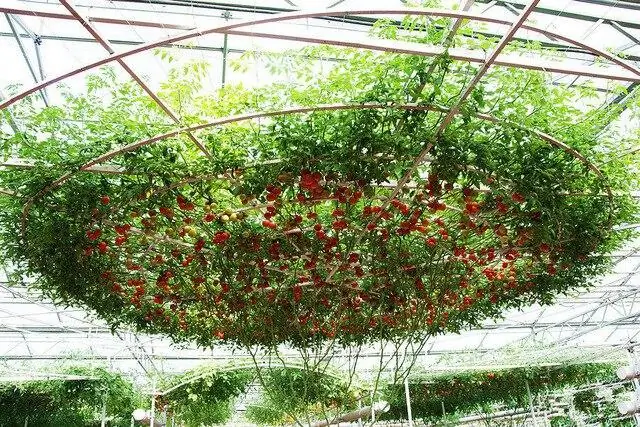
Table of contents:
- Author Bailey Albertson [email protected].
- Public 2023-12-17 12:53.
- Last modified 2025-06-01 07:32.
8 spectacular large-leaved hydrangea varieties that suit the middle lane

Hydrangea is an exquisite large-leaved shrub that, with minimal care, can delight you with bright caps of its inflorescences for many months. Despite the fact that this is a heat-loving plant, many of the varieties thrive in the middle lane and easily endure winters.
Spike

Perennial flowering shrub with original large spherical inflorescences 20-25 cm in diameter. The buds are dense, strong, keep their shape well in inflorescences, do not decay from rain and wind. The edges of the petals are corrugated. Looks beautiful both in single and in group landings.
Blooms from mid-June to October. The grade is remontant. Requires regular watering. Prefers acidic and slightly acidic soils, which provide a bright pink to blue color. Hardy, but requires shelter for the winter. It tolerates wintering well in the middle lane.
Tricolor

It got its name from the unusual color of the leaves: green and white with a yellow border. The inflorescences are flat, but wide, 15-25 cm in diameter. The flowers are snow-white at the edges and light blue or lilac in the middle. The color depends on the acidity of the soil.
Unpretentious shrub. Grows well both in the shade and in open areas. The bushes are low, up to 1 m in height, suitable for group plantings. They tolerate wintering well, provided that they are covered.
Papillon

Hydrangea paniculata Papillon is a shrub plant up to 2 m high. The leaves are dark green, oval in shape with smooth edges and pointed ends.
Cone-shaped inflorescences 20-30 cm long consist of two types of flowers. The variety got its name from the sterile, large, four-petalled snow-white flowers that float in the air like butterflies. The inflorescence contains the predominant majority of fruiting flowers of a smaller size, pinkish. Blooms from July to late October.
Prefers acidic soils with high humidity. Photophilous, but shade tolerates well. The plant is frost-resistant, mulching is enough for the winter. Fast growing variety. Growth per year - up to 25 cm.
Hamburg

A medium-sized shrub, 100-120 cm, with dense dense leaves and large spherical inflorescences, reaching a diameter of 25-30 cm. Inflorescences are formed at the ends of the branches, so in the midst of flowering foliage is practically invisible. Blooms in July-August. On one plant, inflorescences of various shades can form - from pink to lilac. This is influenced by the composition of the earth. On more acidic soils, the flowers are darker. To maintain a rich color, it is recommended to feed the crop with special fertilizers.
Requires acidic loose soils with good moisture. Mulching helps to reduce the amount of watering. Prefers sun or partial shade. Looks beautiful in individual landings.
Quadricolor

Large-leaved, spreading shrub up to 1 m high. Leaves are dark green with yellow edging and light beige spots. The flowers are small, white or pink, gathered in large inflorescences with a diameter of 20-25 cm. The flowering period is August-September. Does not need pruning and removal of inflorescences.
Frost resistant. For the winter, it is advisable to bend the branches to the ground, cover and feed. Demanding on sunlight and moisture. Prefers sod-podzolic and light loam soils.
Green Shadow

Eye-catching thanks to the unusual pink-green color of large, lush inflorescences. The intensity and saturation of the color depends on the condition of the soil and can range from maroon to pink. Hydrangea blooms from late June to September. The leaves are dense, dark, oval in shape. Looks good in both single and group plantings.
For the winter, the plant must be covered. In the spring, it starts up shoots from last year's branches. The shelter can be removed completely only after the onset of stable warm weather. Growing indoors and outdoors is allowed.
Gerda Steiniger

A bright ornamental shrub 90-120 cm high. Sometimes it reaches 150 cm. The diameter is about 120 cm. The leaves are ovoid, green. Raspberry-pink inflorescences with a diameter of 20 cm. It blooms from June until frost. The saturation of the color directly depends on the acidity of the soil.
Prefers sun or partial shade. Picky about watering, does not tolerate drought. However, severe waterlogging can lead to disease. The plant must be covered for the winter.
Blueberry Cheesecake

The variety won a gold medal at the Plantarium 2012 exhibition in the Netherlands. It is a hybrid of two types - serrated and large-leaved hydrangeas.
It reaches a height of 120 cm. The bush is compact, but the branches are highly branched. It has 2 types of flowers: large sterile (semi-double, purple-yellow) and small fruiting (darker shade). It blooms from July to October, both on last year's shoots and on young branches. Thanks to this, a dense flowering crown is formed. Dark green leaves turn red by autumn, which gives the bush an additional decorative effect.
Recommended:
Why Does A Cat Or Cat Shed Heavily And What To Do If The Hair Climbs And Falls Out In Large Quantities In A Kitten And An Adult Animal

How is molting in cats normal? Features in different breeds. How to help a cat with normal and prolonged molting. Diseases manifested by abundant molting
How To Grow A Tomato Tree At Home: Octopus, Tsifomandra And Other Varieties, Reviews, Photos And Videos

Tomato tree (octopus, or tamarillo): what is it, where it grows, how not to be confused with an ordinary tomato. Varieties. Is it possible to grow on a plot in a greenhouse. Reviews. Video
Where To Put The Microwave In The Kitchen: Placement Options In A Small And Large Space, Photo

Microwave placement rules, where you can and where you can't. Location options in the kitchen, pros and cons of each. How to hang the microwave yourself
Large Breeds Of Cats: Species With Photos, Features Of Care And Maintenance, Reviews Of Owners Of Large Cats

What are the big breeds of cats, what is necessary for keeping such a cat, how to feed and care for it
Several Varieties Of Raspberries, Currants And Apple Trees With Large Fruits

Several horticultural crops with large fruits
